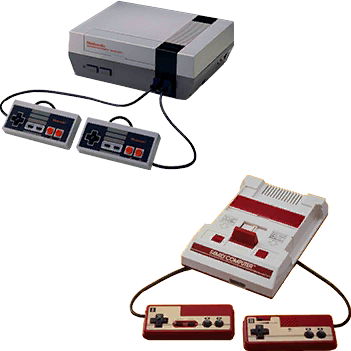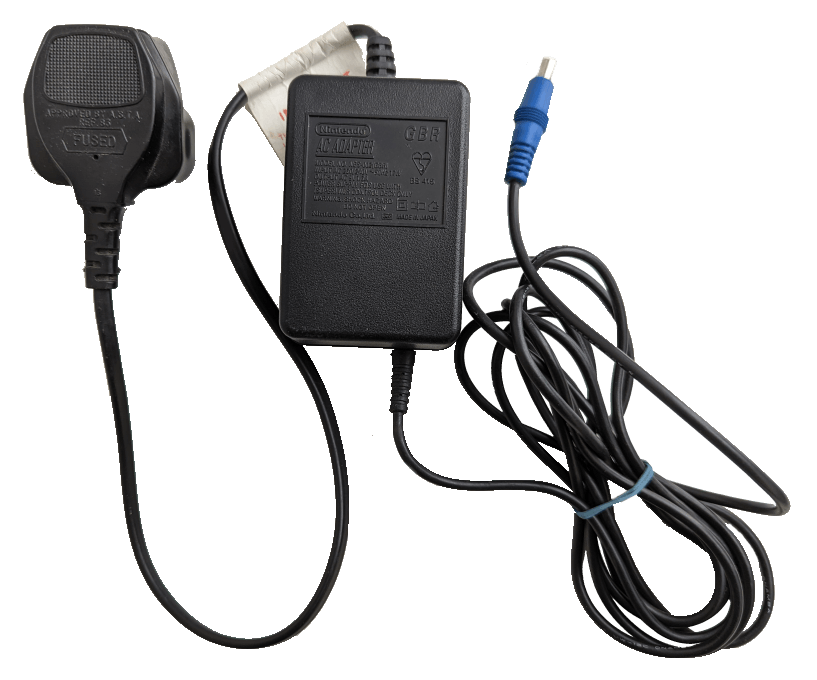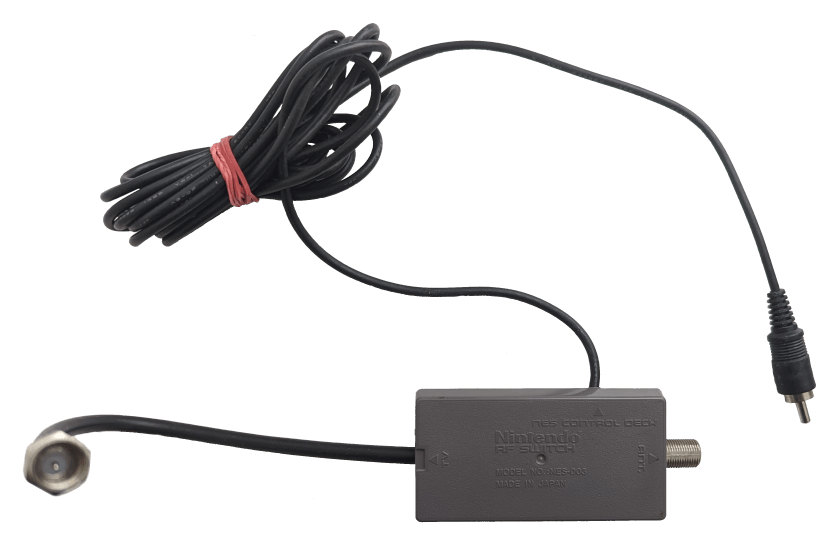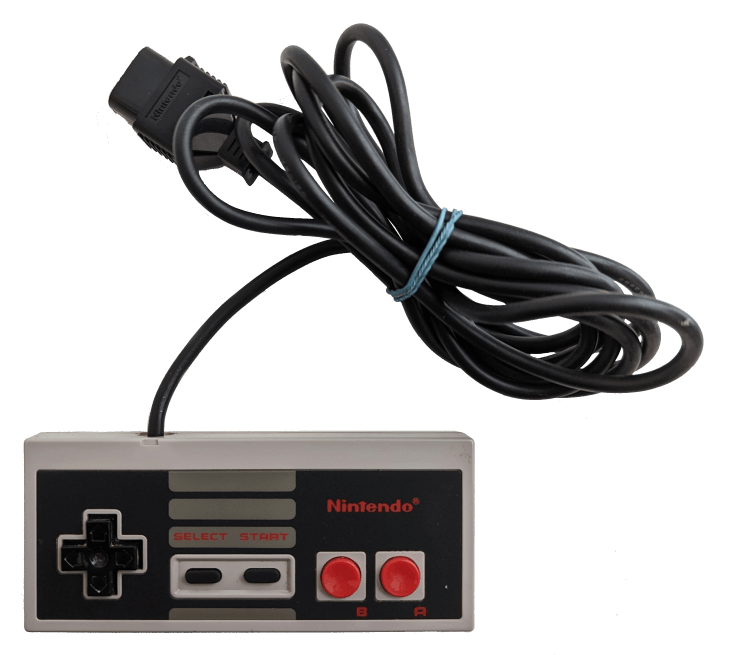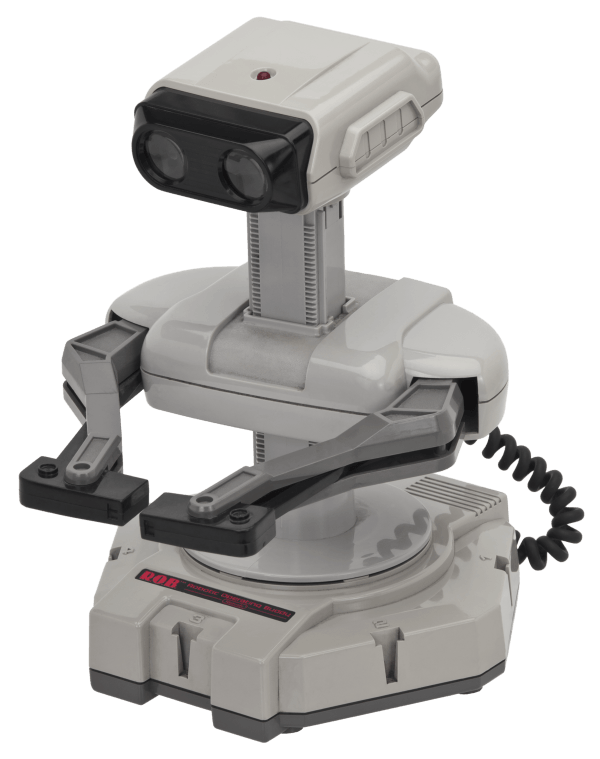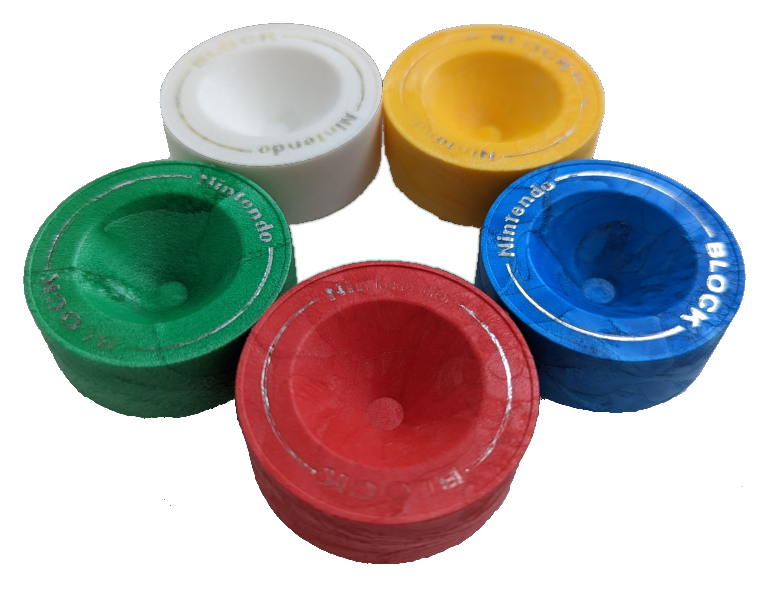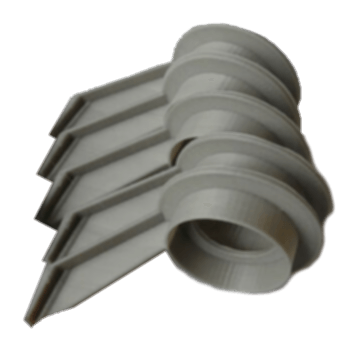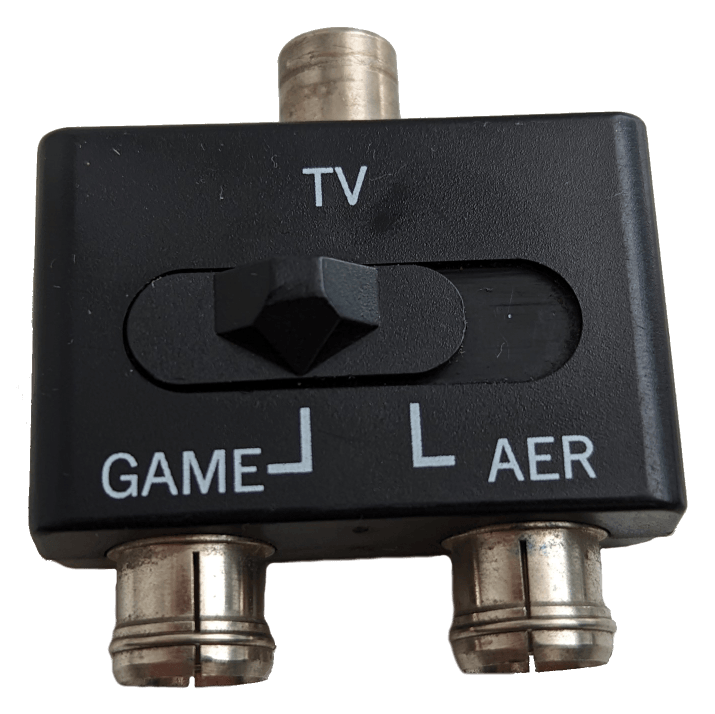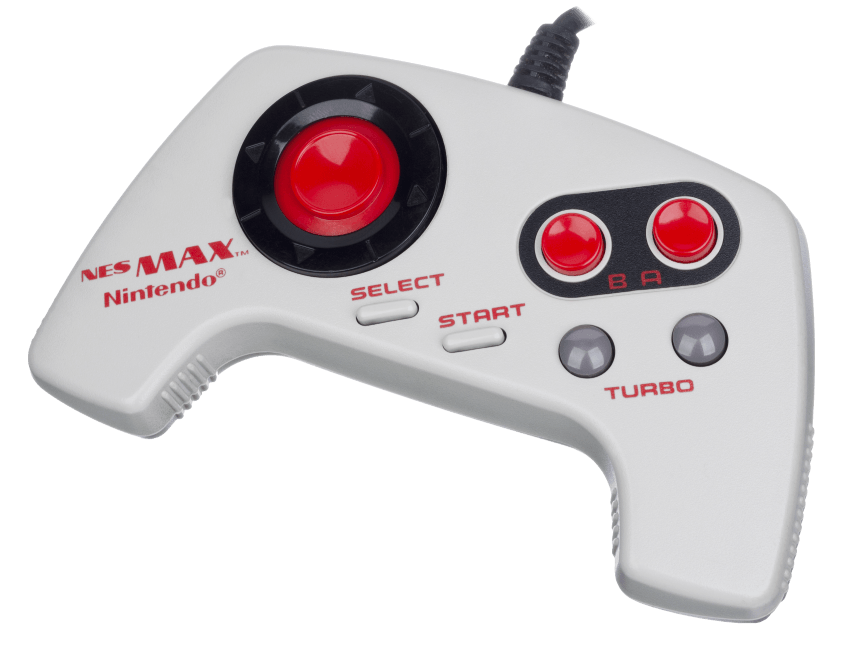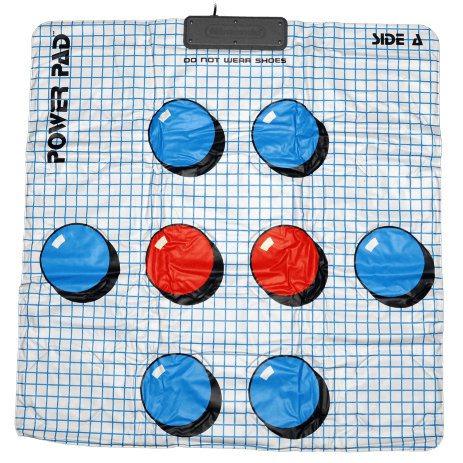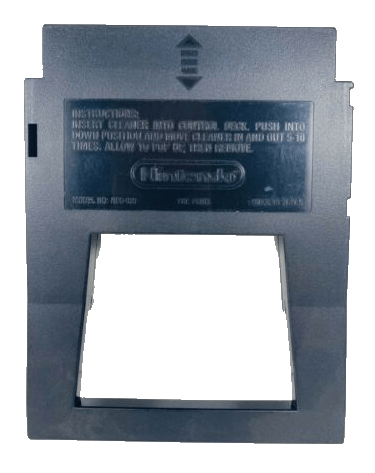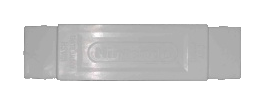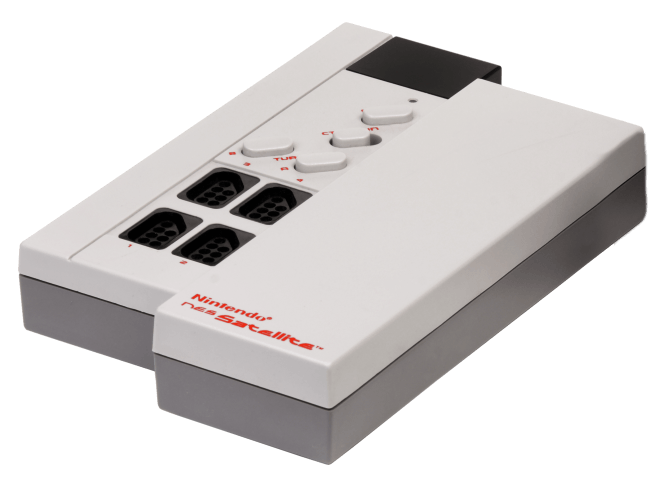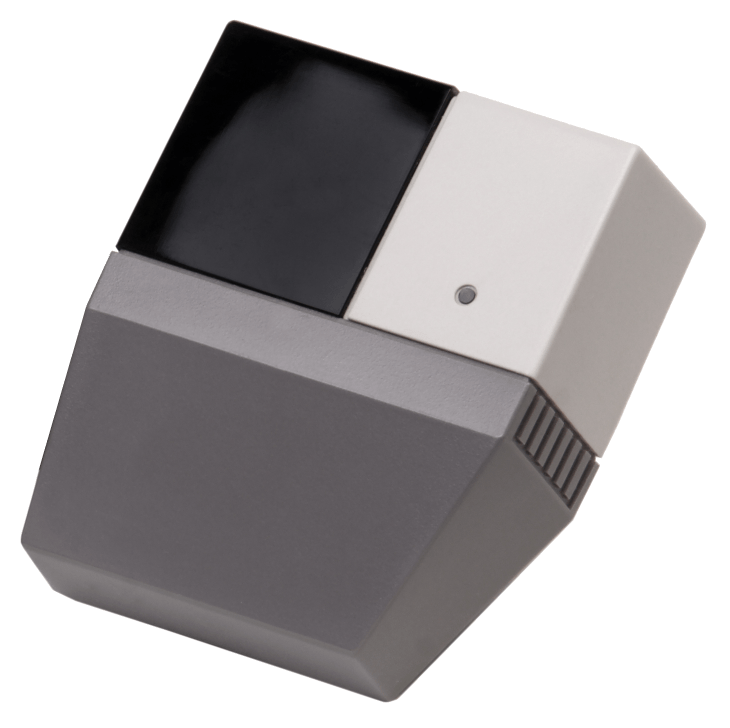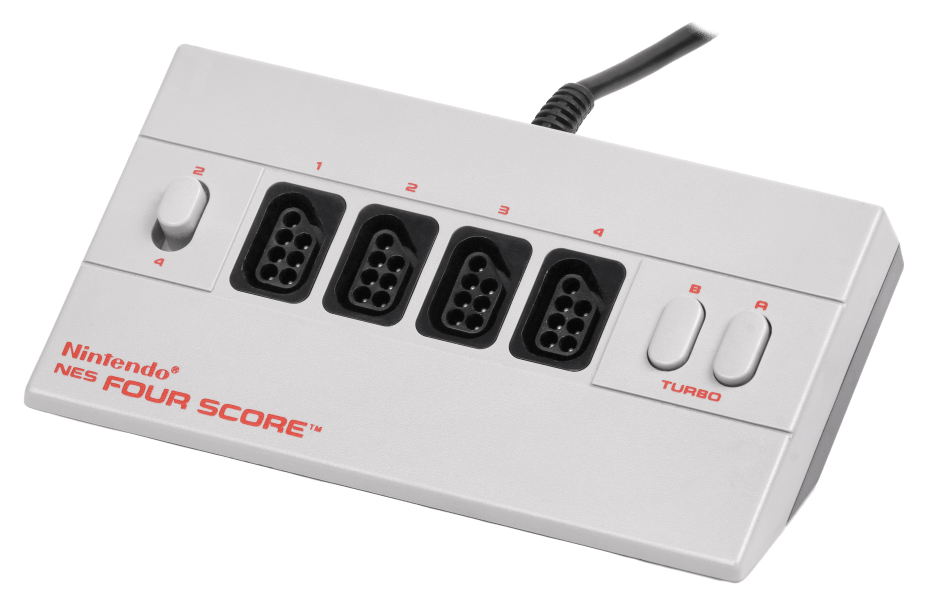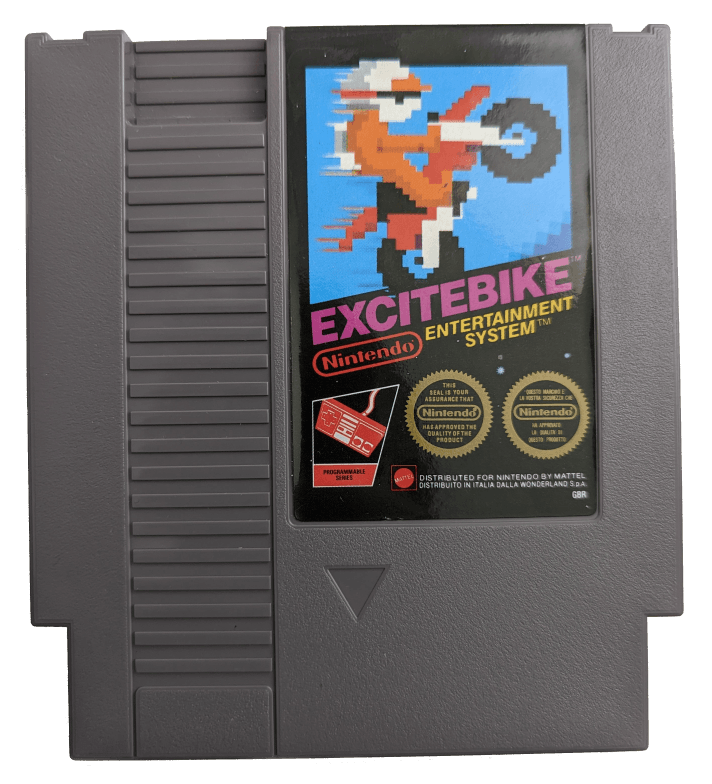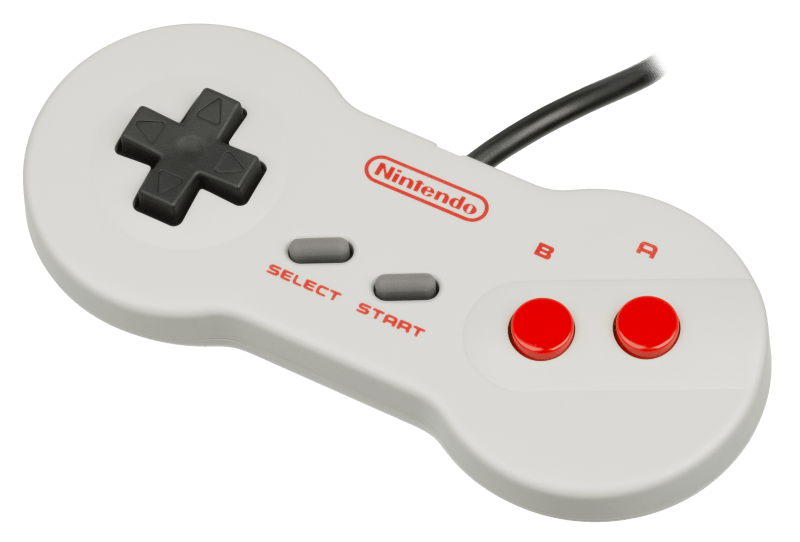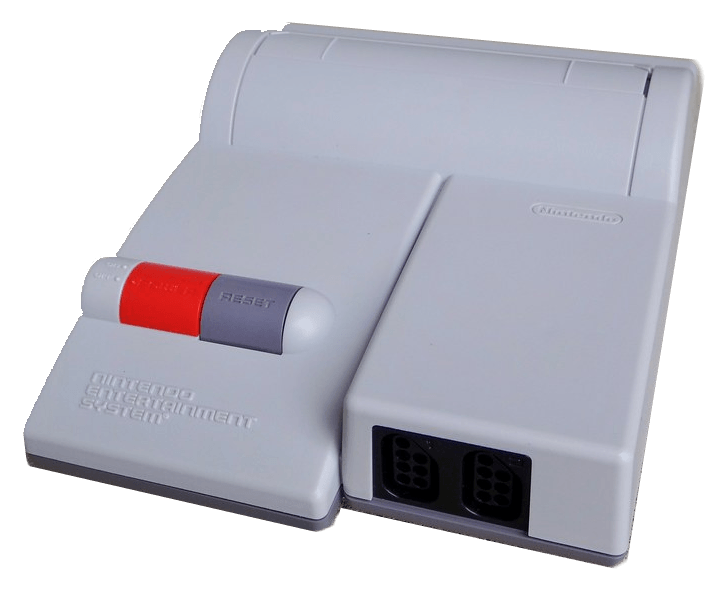Welcome to Luckless Heaven! This website is (soon to be) the biggest encyclopedia for Nintendo-related information on the Internet. Currently under construction.
Home console originally released in 1983 as the Family Computer
Called the Family Computer (Famicom) in Japan and the Nintendo Entertainment System (NES) in the United States and Europe, both with wildly different designs, these home-gaming consoles could play many games, simply by changing cartridges. They were so popular, they sparked a video-game boom.
Note: NES hardware does not have a consistent hardware abbreviation across regions.
American NES hardware uses NES and PAL NES hardware uses a mix of NES, NESE and NESP.
NESE hardware seems to have region lockout features that mean they largely only work with other European hardware.
NES-001, NESE-001
NES
The NES is an 8-bit console that was originally created after Nintendo were presented a prototype ColecoVision and were so impressed, they strived to create their own console that could replicate the experience of playing their hit arcade game, "Donkey Kong", in the comfort of someone's home. Called the Famicom in Japan, the console was made to be both cheap and accessible, so anyone could buy one and immediately know how to play games on it. Due to the ongoing videogame crash, the Famicom console was redesigned to look less like a games machine, and more like a video player, hence why the new NES design requires cartridges to be inserted and pushed down, similar to the movements of a standard VHS player. The NES had separate controllers so controllers could be swapped around, and now had AV ports in addition to RF display.
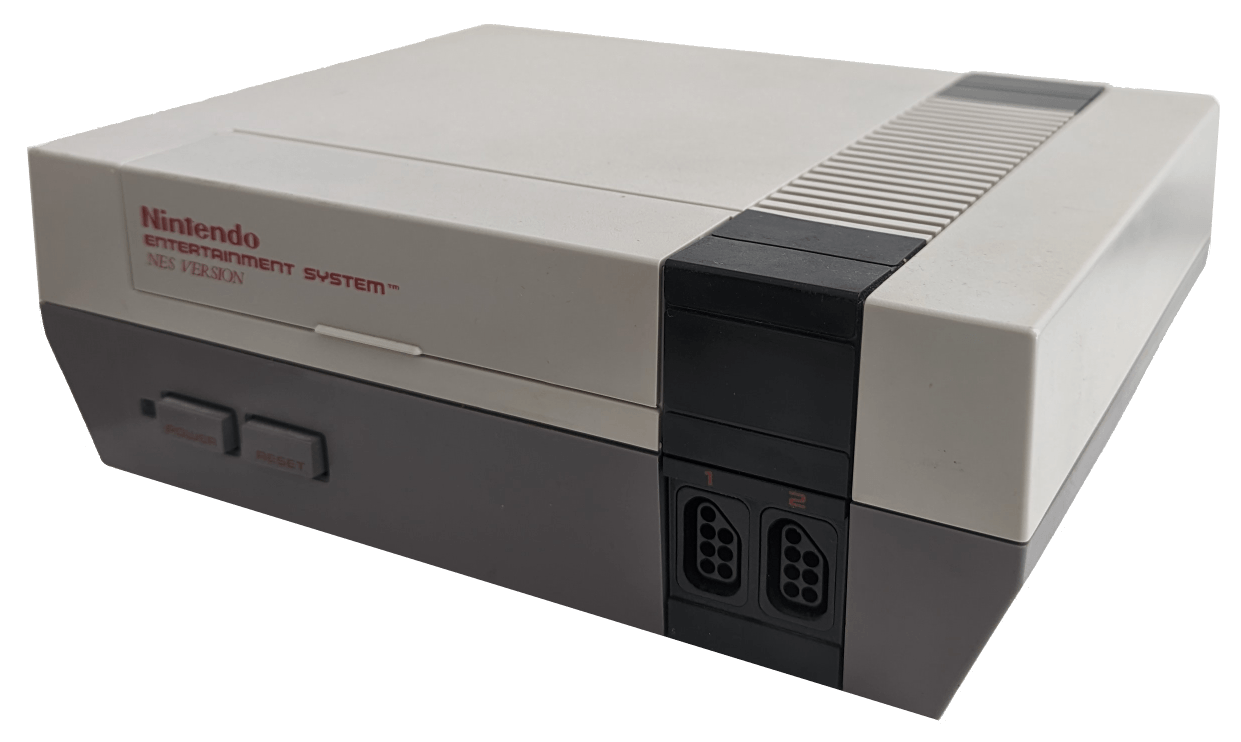
NES-003, NESP-003
RF Switch
The RF Switch is a converter that allows the NES to use a RF display cable to connect to a television. Essential for older televisions that had no better video inputs than RF. the RF Switch differs in design between the Japanese version and the overseas version due to differing RF ports between regions. Both designs serve the same basic function. One cable connects to the TV, one cable connects to the console and then there's a circuit (HVC) or a port (NES) to allow another device to be connected to the TV, likely a set-top box or a video player.
NES-004, NES-004E
NES Controller
The NES Controller is a basic design, with two face buttons, two smaller face buttons for Start/Select and a d-pad. The simple design allowed for new players to easily pick up and play games, though it could be quite limiting when more complicated games arrived. The Famicom Controllers are similar, but are wired directly to the console and match the Famicom's colour scheme. The second player Famicom controller lacks the start and select buttons, but features a microphone and volume slider for said microphone. This microphone had extremely limited uses and was dropped when the NES was designed.
NES-005
NES Zapper
The NES Zapper is a light-gun; a toy gun that can aim and shoot at the television, in order to influence the game. This accessory is famously associated with the common pack-in title, "Duck Hunt", though it also saw use in other games, such as "Wild Gunman" and "Hogan's Alley". The Japanese version, the Famicom Gun, is designed after Nintendo's old toy, the Nintendo Beam Gun, which itself was based off of a real life gun, a Colt Single-Action Army revolver. Due to concerns that it'd be mistaken for a real gun in the United States, a nation where citizens can own handguns, the Famicom Gun was redesigned into the much more toy-like NES Zapper. It would later get recoloured from gray to a bright orange, to really emphasise that it wasn't a real firearm.

NES-006, NESE-006, NESP-006
Unidentified
NES-007, NESE-007, NESP-007
Unidentified
NES-008, NESE-008, NESP-008
Unidentified
NES-009, NESE-009, NESP-009
Unidentified
NES-010, NESE-010, NESP-010
Unidentified
NES-011, NESE-011, NESP-011
Unidentified
NES-012, NESP-012
R.O.B. (Robotic Operating Buddy)
R.O.B. is a robot toy that operates off of four AA batteries and moves around, based on signals that flash on the television screen. The device largely uses the same technology as the NES Zapper, but with more variation in what signals it recognises. R.O.B. was released as way to further push the NES as not a videogame console overseas, since the large number of lacklustre games on other consoles had made people wary of videogame consoles. This device helped to push the NES as more of a toy for children, though it only saw limited usage once released, only being compatible with its packaged game, "Gyromite", and the separately released "Stack-Up".
NES-013
5 Coloured Blocks (for R.O.B.)
The 5 coloured blocks are used alongside R.O.B. for the game they are packaged with, "Stack Up". The blocks are made of a thick, durable plastic and each one is a unique colour: blue, green, red, white and yellow. The player must arrange these blocks in certain formations, in order to beat levels in "Stack Up". However, there's no way for the game to confirm you've arranged them correctly, so it can be easily cheated. The hardware code for these is confirmed in "Stack Up"'s manual.
NES-015
2 Block Hands (for R.O.B.)
The 2 block hands are used alongside R.O.B. for the game they are packaged with, "Stack Up". These hands have small foam cushions that allow ROB to pick up and place blocks with a variable amount of grip, so that it doesn't grip the blocks to tightly or loosely. The hardware code for these is confirmed in "Stack Up"'s manual.
NES-016, NESE-016, NESP-016
Unidentified
NES-017, NESE-017, NESP-017
Unidentified
NES-018, NESE-018, NESP-018
Unidentified
NES-019, NESE-019, NESP-019
Unidentified
NES-020, NESE-020, NESP-020
Unidentified
NES-021, NESE-021, NESP-021
Unidentified
NES-022, NESE-022, NESP-022
Unidentified
NESP-023
Aerial Extension Cable
The Aerial Extension Cable is an RF cable with two different connectors on either side of the cable, made with the intention of connecting the Aerial Switch Box to a television, and generally providing a longer RF connection than the RF Switch. This accessory was only available bundled with the Nintendo 64 in certain European countries, and due to its Belling-Lee connectors, is only compatible with PAL region TVs.
NESP-024
Aerial Switch Box
The Aerial Switch Box is a device with a physical switch, along with two RF IN ports and an RF OUT port. The RF IN ports are labelled "GAME" and "AER" (aerial), so that you can connect a videogame console and a TV set/video player via RF cables to the RF IN ports, and then connect them simultaneously to a television via the RF OUT port and Aerial Extension Cable. The physical switch can then be used to switch between the videogame console or cable TV/VHS, without needing to repeatedly unplug and setup multiple devices. Despite the heavy implication that a game console and TV/VHS device should be used with the device, really any two devices can be hooked up at any time, such as two videogame consoles; the labels are just there to help with organisation. This accessory was only available bundled with the Nintendo 64 in certain European countries, and due to its Belling-Lee connectors, is only compatible with PAL region TVs.
NESP-025
RF Cable
The RF Cable is a cable with two different connectors on either side of the cable (different from the Aerial Extension Cable), made with the intention of connecting the Aerial Switch Box (or simply a television) to the console, or the RF Modulator (NUS-003), which would then plug into the console. This accessory was only available bundled with the Nintendo 64 in certain European countries, and due to its Belling-Lee connectors, is only compatible with PAL region TVs.
NES-026
NES Advantage Joystick
The NES Advantage Joystick is a desktop arcade stick intended to be used with genres more commonly associated with arcade setups, such as fighting games and shoot-em-ups. It has all the same buttons as a standard NES controller, though rather than having face and shoulder buttons, all buttons have been turned into much larger face buttons, and the D-pad has been replaced with a joystick, resembling the usual arcade control panel setup. This controller also features turbo dials for the A and B buttons; turning the dial adjusts how quickly the controller continuously presses the A/B button. There's a "slow" button, a feature that simply continuously presses the Start button, repeatedly pausing and unpausing the game to achieve a slowed-down gameplay experience. The cable that connects the controller to the NES console has two connectors, and flicking the Player switch allows the controller to act as either the Player 1 or Player 2 controller; used for games where the "multiplayer" is both players taking turns at playing the same game. This controller was only released in the United States and Europe.
NES-027, NESP-027
NES MAX Controller
The NES MAX Controller is a redesigned NES Controller that has all of the same functionality, but with quality-of-life design changes, such as handles on each side, so people don't have to deal with the original controller's notoriously pointy corners poking into their hands. There's turbo buttons for the A and B button for toggleable button mashing, similar to the NES Advantage controller, and the D-pad is replaced with a slide pad, which can help prevent blisters from too much gaming.
NES-028
Power Pad
The Power Pad is a large plastic mat that allows players to control videogames using their feet. This mat was largely used for various third-party fitness games, originally being released by Bandai in Japan for the game "Family Trainer". Nintendo later bought the rights to the game and accessory in North America, and redesigned the mat into the Power Pad. "Family Trainer" was renamed by Nintendo, to "World Class Track Meet" and was one of only eleven total games compatible with the accessory, half of which never released outside of Japan. This mat accessory would be the ancestor of the short-lived dance mat craze that existed during the early 2000s, with games such as "Dance Dance Revolution" using similar technology.
NES-029
NES Hands Free Controller
The NES Hands Free is a controller created to allow the physically disabled and those with special needs a way to play NES games with needing to use their hands. The entire device is strapped onto the user, like a vest, with the controls sitting below and in front of the face. The "D-pad" is a large stick with a plastic-bowl end, where the player can use their chin to move the stick in different directions (a foam ball can also be attached, if the plastic becomes uncomfortable). The "A" and "B" buttons are controlled by an "articulation tube", a long plastic tube that the player can sip from and blow into to use either "A" or "B". Sipping or blowing harder activates the "Select" and "Start" buttons, respectively. There's two knobs to adjust how hard the user needs to sip or blow to activate "Select" and "Start", to prevent the user from accidentally pausing the game during gameplay. The location of the "D-pad" stick is adjustable via two moving arms. This accessory was only available by mail order, and only in the United States, for a relatively high price. As such, it's fairly rare accessory nowadays.
NES-030
NES Control Deck Cleaner
The NES Control Deck Cleaner is a vaguely NES Cartridge-shaped accessory with a large hole that acts as a handle. The NES Control Deck Cleaner can be inserted into the NES console like a cartridge, to clean the contacts within the console. There's also a slot on the back where the NES Game Pak Cleaner (NES-031, see below) can be inserted when not in-use. This accessory was sold as part of the NES Cleaning Kit in both Europe and the United States.
NES-031
NES Card Pak Cleaner
The NES Card Pak Cleaner is a small plastic stick with cloth pads on either end. The NES Card Pak Cleaner can be used to clean the contacts on individual NES cartridges, in case the NES Control Deck Cleaner doesn't solve the issue. This accessory was sold as part of the NES Cleaning Kit in both Europe and the United States.
NES-032
NES Satellite Remote
The NES Satellite is a peripheral that allows for four controllers to be connected simultaneously to a NES console, allowing four-player multiplayer for compatible titles. The peripheral is also wireless, using infrared technology, meaning that players can sit twice as far away from the console. There are three buttons and a switch; the Power button activates the NES Satellite, and the turbo A and B buttons spams the A or B button for every controller plugged in (though this feature is reportedly surprisingly slow). The CTRL/GUN switch is used to switch between either a regular controller or a NES Zapper. This is done to force games to recognise the NES Zapper, regardless of which port its plugged into, as some games will only register the NES Zapper if it's plugged into Controller Port 2. The NES Satellite Remote requires six C-type batteries to power on.
NES-033
NES Satellite Receiver
The NES Satellite Receiver was bundled with the NES Satellite Remote, and is used to receive infrared signals from the NES Satellite Remote. The receiver is plugged into the NES console's two controller ports, and draws power from the console. The receiver is designed specifically to look like a natural extension of the console.
NES-034, NESE-034
NES Four Score
The NES Four Score is essentially a wired version of the NES Satellite. It allows four controllers to be plugged in simultaneously, so that people can play certain multiplayer games with four players. The accessory connects directly to the NES console via the two controller ports, eliminating the NES Satellite's disadvantage of gameplay being interrupted by a person walking by and obstructing the infrared signal. The Four Score has turbo A and turbo B buttons that spam the A and B buttons for every controller, and at a much faster rate than the NES Satellite. Lastly, there's a "2/4" Player switch, which functions the same as the "CTRL/GUN" switch on the NES Satellite Remote, which can force the NES Zapper to be used in any port.
NES-034A
While the standard NES Four Score
has a Hori FPA-92-S01 chip marked as "9109 B", this version of the NES Four Score has a "9109 U" marking. It's unknown what this really changes. The NES-034A model also has "NTSC/PAL" written on the board, possibly to indicate that it's a region-free model.
NES-035, NESE-035, NESP-035
Unidentified
NES-036, NESE-036, NESP-036
Unidentified
NES-037, NESE-037, NESP-037
Unidentified
NES-038
NES Cartridge
The NES Cartridges are used to play games on the NES. They're much larger than their Famicom equivalents, and are typically grey, though shiny gold cartridges were manufactured for "The Legend of Zelda" and "Zelda II: The Adventure of Link". While most NES cartridges have different PCBs from their Famicom equivalents, preventing any kind of region swapping, some older NES cartridges actually contain a Famicom PCB with a converter. This converter could be removed and used with any Famicom cartridge, as a way to easily avoid region locks. It's due to this that certain older NES games, such as "Stack Up", are so rare, as they were popular targets for people looking to obtain Famicom converters.
NES-038(-01)
This model number is used for NES cartridges with battery saves. Despite being a very common feature now, the ability to save in NES games wasn't very common until midway through the NES's lifetime. These cartridges have larger PCBs than usual, with a small battery soldered on, to record saves. Aside from that, they also usually have gold warning stickers on the back of the cartridge, rather than the usual light-gray.
Interestingly, the model numbers for NES cartridges seems to be a rather late number, despite being available since the NES released. They also only seem to be found on the boxes and cartridges of PAL NES games, released during and after 1990.
NES-039
New-Style NES Controller
The New-Style NES Controller was bundled with the New-Style NES (NES-101, see below). As the remodel was released a few years after the Super NES, this controller takes a lot of design queues from the Super NES's controller, including the more comfortable "dogbone" shape, and the slanted alignment of the A and B buttons, making them easier to simultaneously press. Ultimately, the controller still functions the same as a standard NES controller.
NES-101, NESP-101
New-Style NES
The New-Style NES is a remodel released in 1993, after the release of the Super NES, and was sold as a redesigned budget model of the original NES. Most features remain the same, but the cartridge slot is now a "toploader" design, which avoids many of the mechanical issues that the original "VCR" design was prone to. Bizarrely, the console only has an RF port with a channel switch and lacks a standard AV port; bizarre, as the Japanese-equivalent remodel was marketed with an AV port as a major selling point. Nintendo would later release a limited number of refurbished models that have modded AV ports, which are quite rare to find nowadays. The New-Style NES was only sold in the United States and Australia, with only a controller and no cables, as Nintendo assumed that people already owned either NES's or Super NES's and would already have compatible AC adapters and display cables.

